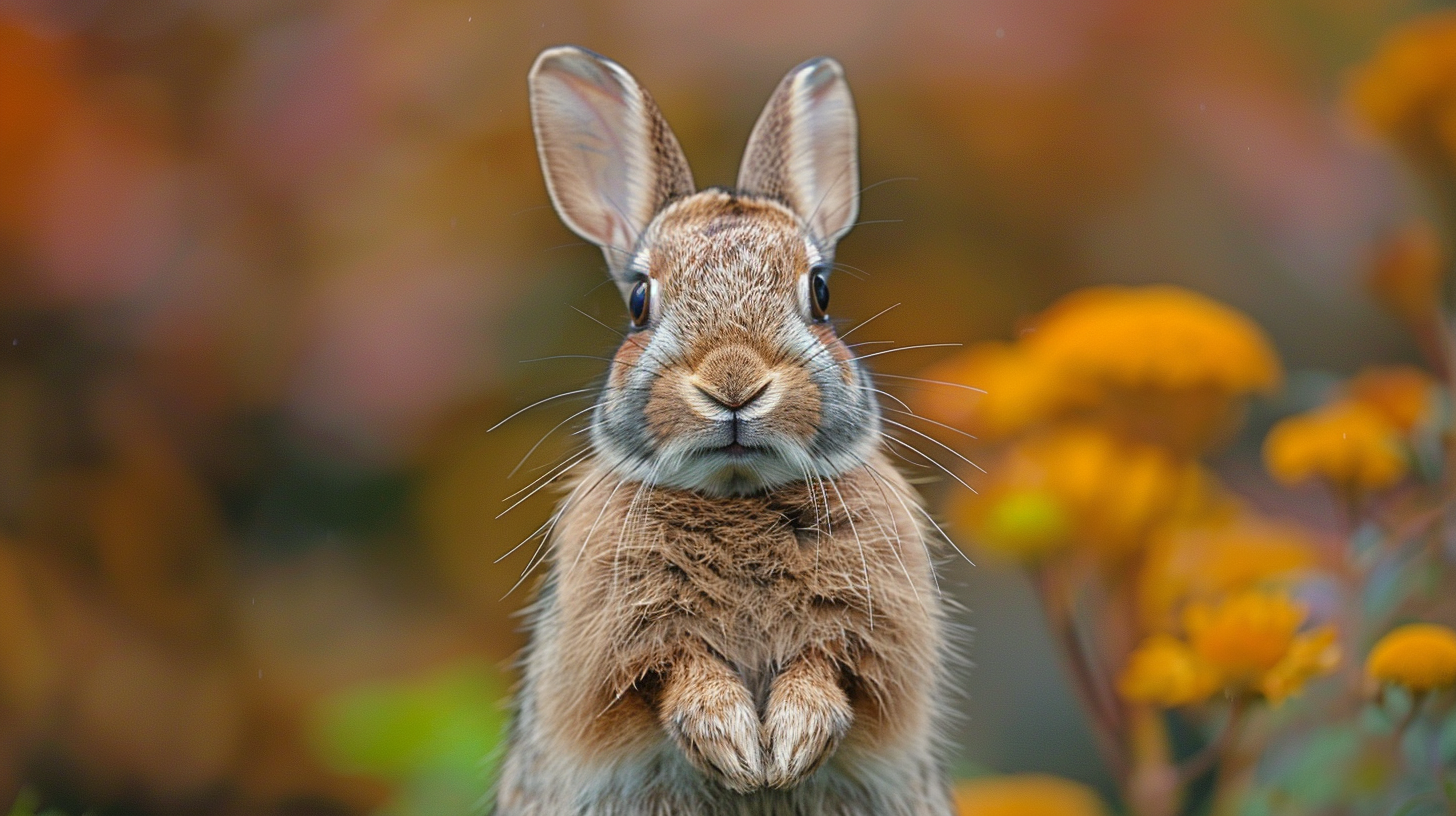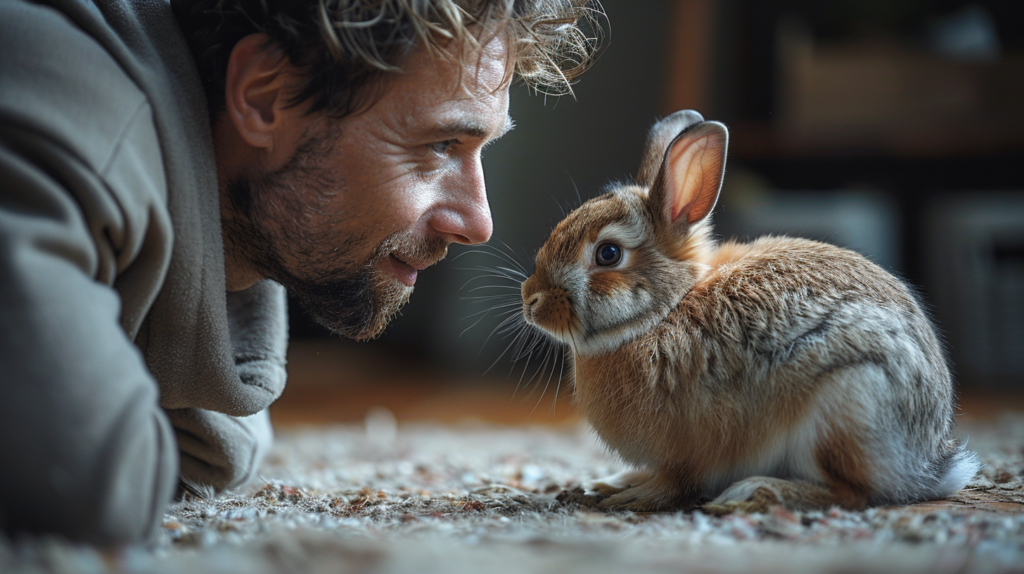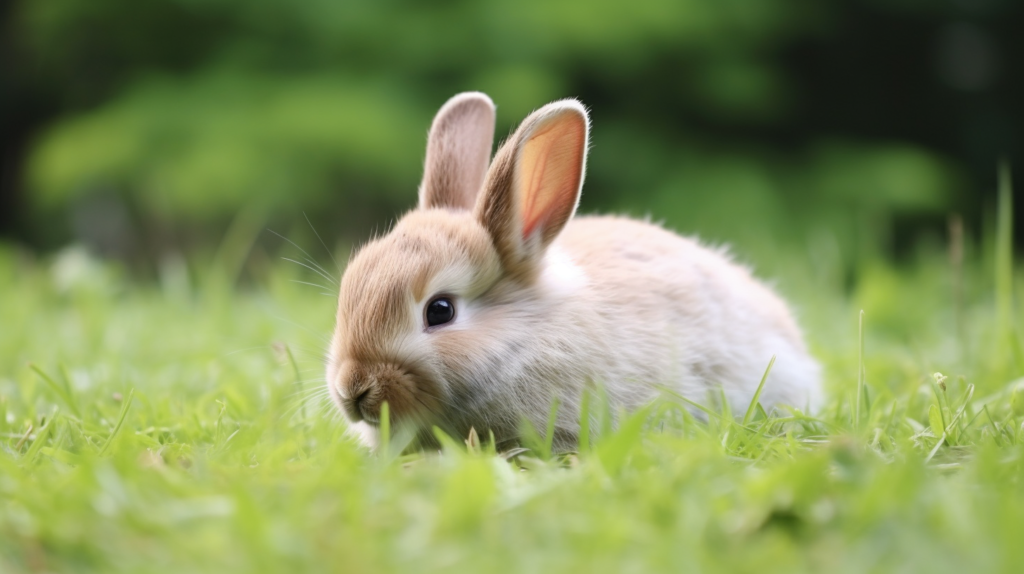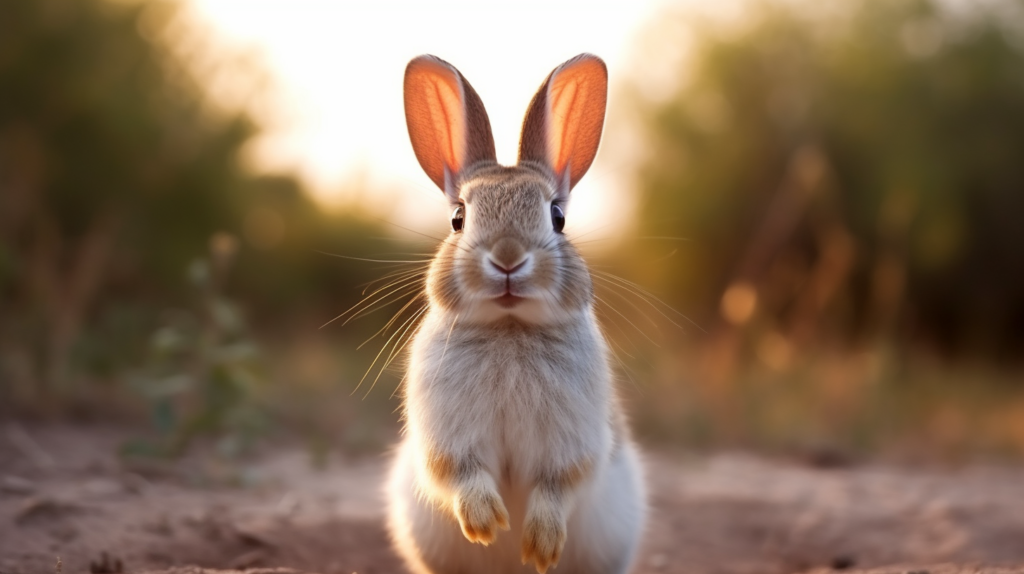9 Must-Know Unhappy Rabbit Body Language Warning Signs!

Knowing your rabbit’s body language is of paramount importance because it helps you tell his arousal state and the extent of his comfort zone. Rabbits as prey live in a savage world where there is not much room for error. Being heard is contingent on their staying alert to the subtlest cues such as ears lowered or stance tensed. To note unhappy rabbit body language is quite easy as this kind of behavior manifests itself through sluggishness, loss of appetite, or even an aggressive stance which can indicate discomfort or other factors that may cause the animal distress. These signs are very important, and ignoring them can cause problems only when they are addressed early.
Here is how you can have a happier rabbit: make a bunny-friendly enclosure with toys, tunnels, and companionship around. Create an account to reveal the answers to the sit-ups below. Besides that, revolve the conversation around their social life as well by becoming their companion or spending quality time with them. Repeated vet tests remain equally valuable to remove whatever necessity from the list of reasons for the unhappy rabbit body language. Through a harmonized diet, which is composed mainly of hay, fresh vegetables, and little pellets, you can contribute to the physical and emotional health of your rabbit. In addition, pay attention to the fact that environmental conditions can greatly affect your rabbit’s mood.
Guarantee that their place of dwelling is quiet, secure, and absent of worries like loud noises or unexpected turning rapidly. By giving a tiny room or hiding spot of some kind, in addition to safe areas for resting or the scare of depression, it is more likely that the hurt may be relieved. Be concerned and attentive, which will help to satisfy your rabbit’s social needs, and deadly hear your unhappy rabbit body language and respond accordingly to guarantee that they are happy and at ease in their new home.
9 Clear Signs Your Rabbit is Unhappy: A Guide for Concerned Pet Owners

- Sudden Behavior Changes:
- If you may detect a change in normal behavior or the signs of depression e.g. lethargy or loss of interest in their favorite activities, it would mean that something at home is not exactly right for them.
- Consult a Vet:
- Nothing internal could make your rabbit hide, so a trip to the vet will help you determine if there is an underlying medical explanation.
- Look for Signs of Stress:
- Flattened Ears: Highlighting tension or nervousness. useful for in-depth research of specific topics.
- Tense Body Posture: The rabbits could hide by sitting on predators’ backs or lying on the ground when scared.
- Reduced Nose Twitching: Lackluster nose twitching such as twitching with less frequency, vigor, or twitching in the wrong location might indicate that something is not right with the hamster, which can be due to unhappiness or stress.
- Avoidance of Social Interaction: Hiding or withdrawing from socializing offers ominous signs of discomfort.
- Thumping: This foot drubbing may either imply that it is scared or not happy such that, any danger approached should be dealt with firmness.
- Fur Pulling: Rabbits that are stressed or frustrated may pull their hair, leaving them bald from head to toe.
- Recognize Aggressive Behavior:
- Boxing: The rabbit depositing them on the floor or punching them with its front paws is one of the classic signs of disgust.
- Growling or Grunting: This unique vocalization by rabbits may be a very extreme sign of horror and fear.
- Showing Teeth: Showing off their front teeth showcased their fear or aggressive nature.
- Observe Physical Cues:
- Hunched Posture: Hunching the body with strained muscles is not appropriate if thought or happiness is not there.
- Smaller Fecal Droppings: Changes in the droppings’ size may potentially indicate repressor illness of the rabbit.
- Address Environmental Factors:
- Ensure a Stimulating Environment: Offer them a place to move around, and cognitively stimulate them.
- Consider Companionship: In case your loneliness is a concern you should think of adopting a rabbit friend.
- Quality Time: Provide as much regularity and quality as possible for your rabbit to keep them company and stimulate them.
- Seek Professional Advice:
- If not familiar with the signals of a rabbit’s well-being, you can ask a specialist to help you out and guide you.
- Recognize Depressive Behaviors:
- Excessive Sleeping: Sometimes slumbering/ sleep is longer than regular for a rabbit may be connected with rabbit tiredness. Losing a rabbit from joy and wants may also be a warning of this illness.
- Loss of Appetite: The absence of food cravings or the loss of interest in the consumer
- Lack of Grooming: Scrapping grooming, one can view this as a representative of a lack of motivation or a depressed spirit in a rabbit.
- Self-Isolation: If rabbits have an alternative but to escape or get away from others on a lesser note, then the problem might be that they are depressed or have high stress levels.
- Identify Signs of Illness:
- Changes in Eating or Drinking Habits: If a child compromises on food or does not drink water, or there are sudden changes in their appetite, it could be a sign of illness.
- Lethargy: Helplessness or unusual less enthusiastic or lazy behavior can be the manifestation of the disease or tenderness.
- Changes in Feces or Urine: A change in color, consistency, or pattern of the stool to a change in odor may be a signal of a health problem.
- Labored Breathing or Nasal Discharge: Respiratory disorders can lead to shortness of breath or discharge from the nose.
14 Vital Warnings: Detecting Rabbit Health Decline

- Lack of Appetite:
- Describes a condition that is an immediate health concern.
- It’s also urgent to seek a vet if they don’t eat for 10-12 hours.
- Seizures:
- Yellow-eating rabbit is not a genetic condition but is caused by a nutritional imbalance that can occur more frequently in older rabbits.
- Erratic Movements:
- Behavioral reactions such as apathetic-aggressive and aggressive-victim roles, mainly because of neurological problems.
- Loss of Strength/Balance:
- Falls often or sits in a slouched position.
- Usually in wan hairless rabbits which can be typical among rabbits with predominant signs of muscle atrophy.
- Trouble Breathing:
- Wheezing, short and fast/long and slow breaths, and mouth breathing.
- Time-sensitive: Respiratory distress must be prioritized.
- Abnormal Fecal Pellets:
- The figure corresponds to distortions of the intestine tract which is an indication of digestive problems.
- Behavioral Changes:
- Deeply depressed, pessimistic, or abrasive.
- Screaming:
- Rare and it’s a sign of very intense pain.
- Blood in Urine:
- It shows the upshot could be cancer/infections.
- Low Body Temperature:
- BDD – Body temperature drop, faint pulse, and increased rapid breathing.
- Indicates deteriorating health.
- Diarrhea:
- Often observed in the cases of young rabbits’ collecting or poisoning.
- Loss of Litter Box Habits:
- Pelvic floor dysfunction may lead to painful urinary retention.
- Paralyzed Limbs:
- Unwarranted paralysis frequently is observed in senile cases.
- Retreating Behavior:
- Vanishing sometimes, the low frequency could be to show signs of stress or imminent danger happening.
Rabbit Joy: How to Spot a Happy Rabbit

A happy rabbit will usually have a body posture that shows general contentedness, such as rest before the tummy, or legs stretched out forming a prop for sitting. Besides that, the eyes which are placed in the middle of the head also show the feeling of contentment. It could also display various characteristics, including wandering, playing, flipping, or turning in the air. They may zip through tunnels and paw at things they find interesting. Whether it’s a quick twitch of their nose, moving their body on a side gently, peeking, or even chinning, these are all sure signs of a happy bunny.
Unhappy Rabbit Body Language – FAQ’S
How do you know rabbits are happy?
This cycle of bright eyes blurt relaxed shoulders, flickered ears, running up and down, aerials, excitedly taking killed food, and hearing fast food-taking animations perfectly expresses the joy of the bunnies.
What is the body language of an unhappy rabbit?
Watch for these signs of rabbit unhappiness: fear, stress, or agitation manifested as flattened ears, large eyes with pupils dilating, dry noses (going along with the possible health problems), hunching postures (which can go along with the discomfort and uneasiness) and thumping feet (those are signs of agitation and annoyance).
What is abnormal Behavior in rabbits?
Strange behaviors like the loss of appetite, late picking, too much of carrying out grooming, or insufficient strength can indicate the disease or stress. Always stay in touch with your utility if you notice these signs twinned with unhappy body language.
How do you know if your rabbit doesn’t like you?
The presence of aggression or retirement may better suggest anxiety or non-conformity overtly rather than dislike.
What are 5 normal behaviors for a rabbit?
The anatomically correct behavior demonstrates binkying, digging, grooming, napping, and pellet production.
What are rabbits scared of?
Rabbits, for example, may come to fear loud noises, unfamiliar smells, quick movements, and being held like a puppy. Introduce the new materials sufficiently slowly to gain a comfortable setting.

As a professional Dr. Irfan Adil has reviewed and written insightful articles on animal health, demonstrating his expertise in the field. His thorough approach and dedication to staying updated on the latest veterinary practices ensure that his patients receive the best possible care. Dr. Irfan Adil is a highly qualified veterinarian based in Lahore, Pakistan. He earned his Doctor of Veterinary Medicine (DVM) degree from Islamia University of Bahawalpur (October 2016 – August 2021). Dr. Adil further specialized in Livestock Management, completing his MPhil from the University of Veterinary and Animal Sciences, Lahore (January 2022 – March 2024). With over three years of experience in a pet clinic, Dr. Adil is committed to providing top-notch pet care and expert advice for pet owners. Meet Dr. Irfan Adil




One Comment